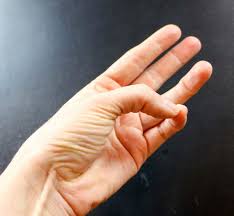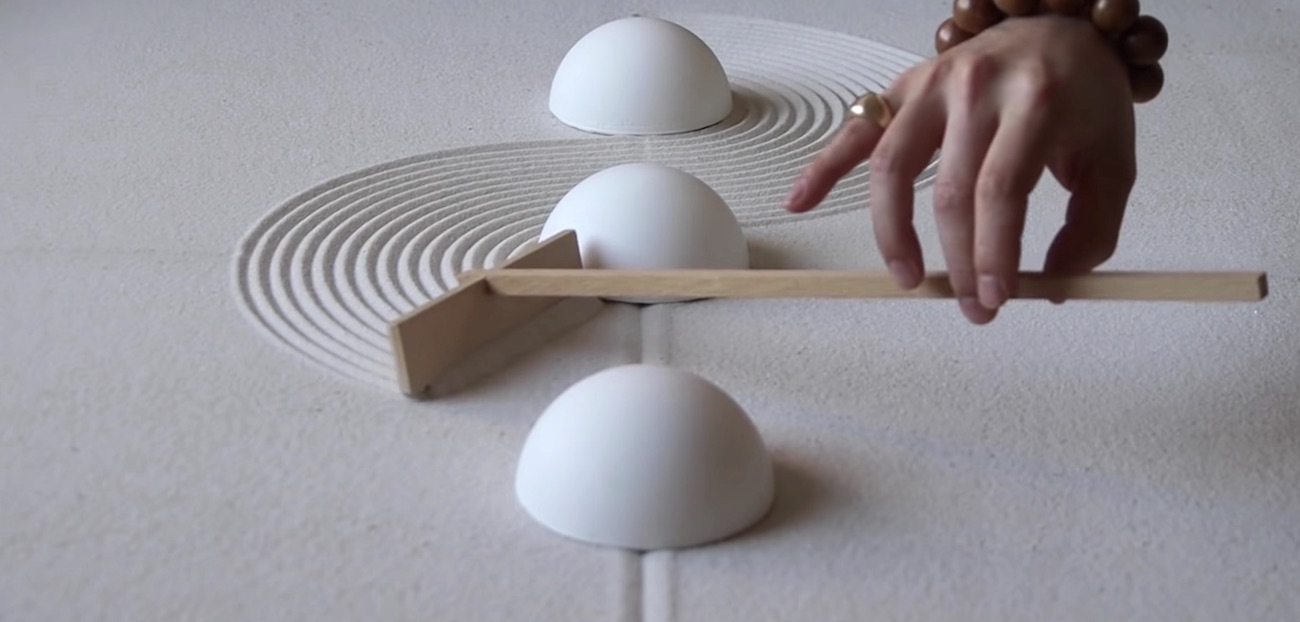Mudras 101: Meditation Hand Positions + 12 Most Common Mudras, Explained
The post Mudras 101: Meditation Hand Positions + 12 Most Common Mudras, Explained appeared first on The Yoga Nomads.
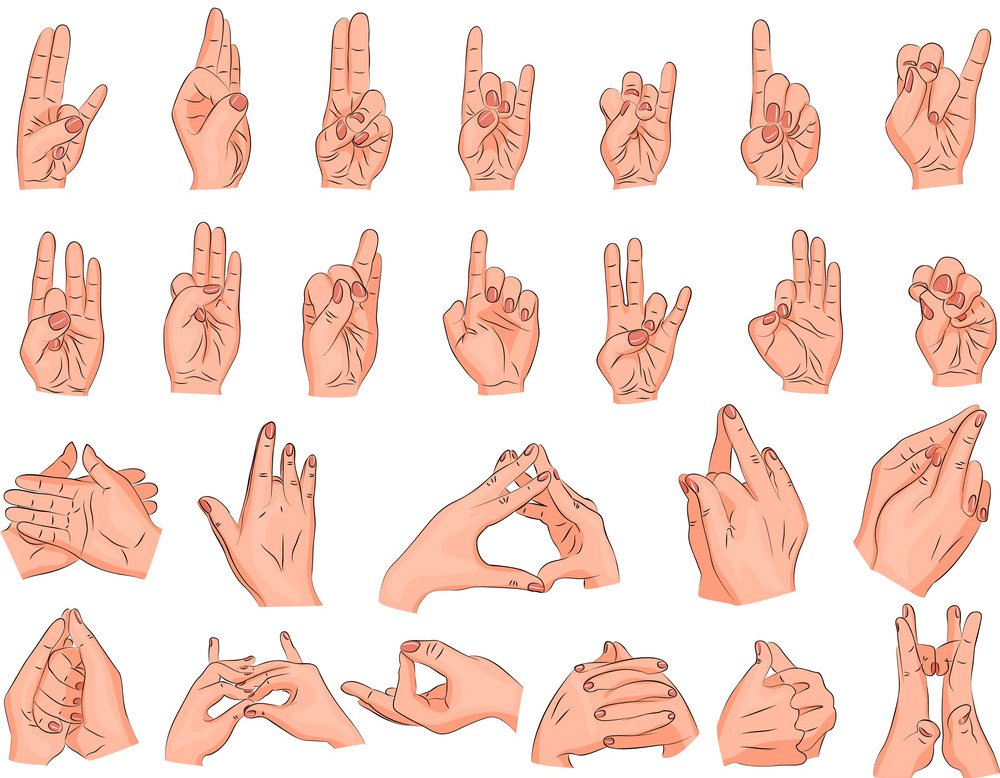
You may have seen a Buddhist statue or a meditation practitioner using the classic yoga hand position of the index finger touching the tip of the thumb. This is the most famous mudra, or hand gesture called Gyana Mudra.
Mudras are used to generate a specific state of mind during yoga or meditation practice. Because different parts of our hands are correlated with specific energy circuits in the body, mudras are powerful ways to stimulate different areas of the brain and nervous system.
You can consider mudras another tool in your spiritual toolbox for working towards mental clarity, meditative discipline, and inner peace.
Let’s explore the meaning and history of mudras, as well as how to use the 10 most common meditation hand positions to enhance your yoga or meditation practice.
What are Mudras?
Mudras are specific meditation hand positions or gestures that help draw your focus inward and channel energy to certain parts of the body. A mudra can involve various placements of your fingers, thumbs, and palms to stimulate different parts of the body. Some mudras can involve the entire body, but most focus specifically on the hands.
The Sanskrit word mudra translates to “gesture”, “seal”, or “mark”. These hand signs have been used in Buddhist, Jainist, and Hindu cultures for thousands of years as part of religious and ceremonial practices ranging from dance to sculpture to yoga.
However, mudras are considered secular and not necessarily linked to specific religious beliefs. These ancient hand gestures are closely interconnected with breathing, meditation, and yoga.
Though you most commonly see them in seated meditations (with hands in mudra resting on the knees), mudras can also be incorporated into yoga asanas and pranayama breathing techniques.
There are technically 5 basic categories of mudras:
YogicSpiritualCurativeReligiousCustomaryThere over 100 mudras that have been specifically used in meditation practice over the centuries. All of them share the common purpose of affecting the flow of life force energy, or prana, throughout the body.
Why Use Mudras During Meditation?
Specific hand gestures can have spiritual benefits as well as positive impacts on physical and emotional health. But, to fully understand the benefits of mudras, we must first explore the ancient healing Indian system of Ayurveda.
According to Ayurvedic philosophy, the human body is constructed of 5 elements:
Agni (fire)Vayu (air)Aakash (space)Pruthvi (earth)Jal (water)These 5 elements also coincide with our hands:
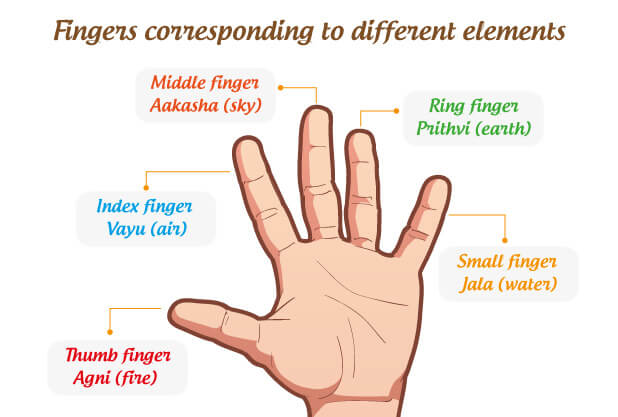
When we are healthy, it is believed that the body has the perfect balance of all these elements. But imbalances in the elemental energy can lead to any manner of illnesses or disease.
Mudra therapy is based on an ancient science that aims to connect energy-flows between the mind, body, and spirit. It may seem subtle, but the hand and finger movements of mudras have the capacity to help physical, mental, and emotional wellbeing. Mudras help restore balance in the body.
You can find mudras for everything from headaches and lung health to stress or spiritual connection. There are also several links between mudra positions and acupressure points in the hands:
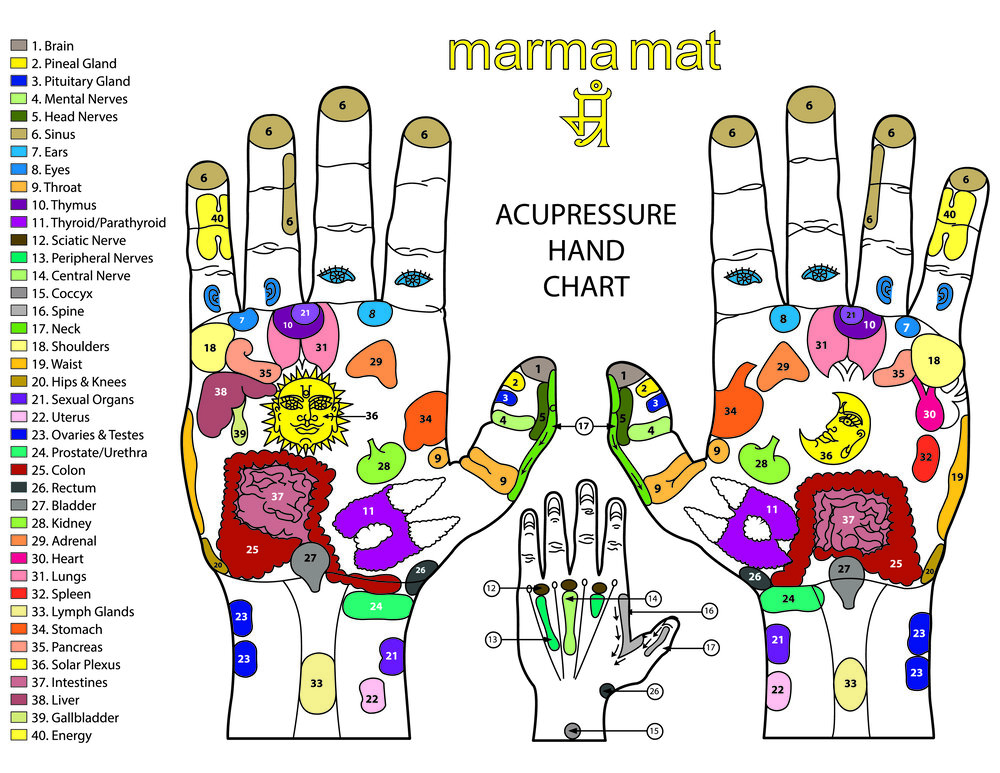
By altering the positions of the hands, mudras create “locks” that guide the body’s energy flow and activate dormant energy for particular purposes.
Mudras may initially seem a little “woo-woo”, but the spiritual and scientific underpinnings of these ancient hand gestures can potentially improve your health on any level. If you have utilized protection crystals, yoga symbolism, or chakra healing, mudras operate in similar realms of mysticism and ancient philosophy.
12 Most Common Mudras: Meanings of Sacred Hand Gestures
Of the hundreds of mudras that have been used in spiritual practices over the centuries, these 12 are the most commonly used in meditation, yoga, and artwork.
1. Gesture of Knowledge: Gyan Mudra
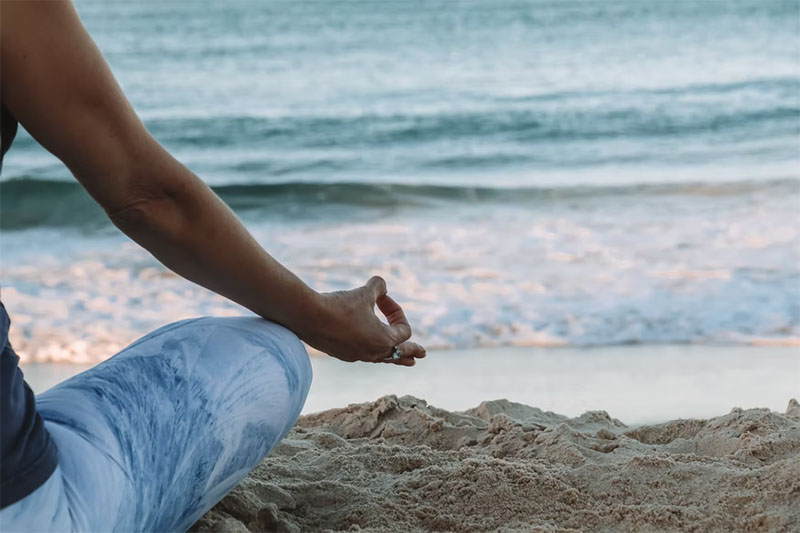
Probably the most well-known of all mudras, the Gyan mudra is most often found in meditation classes. It is also called the Jnana Mudra or the gesture of wisdom. This mudra helps harness the power of concentration, memory, and wisdom. It is also useful for dealing with a creative block.
It is said that holding this mudra during a meditation can help bring new insights for problems in your life. The Gyan gesture can also help reduce stress and improve focused attention on a balancing yoga pose.
How to Do It: Bring the tip of your index finger to touch the tip of your thumb while holding your other three fingers straight.
Associated Elements: Air & Space
2. Mudra of Fearlessness: Abhaya Mudra
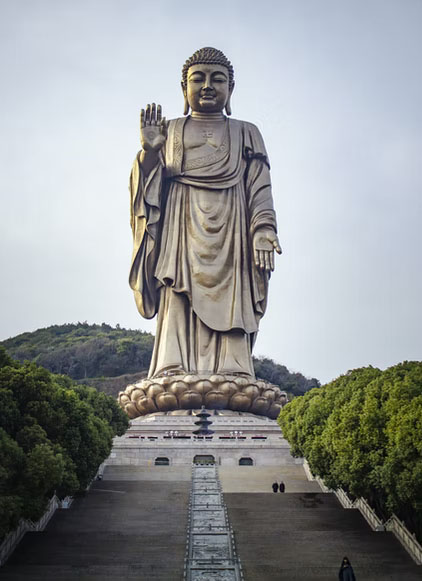
This position is often seen on Burmese and Thai statues of the Buddha and looks much like a relaxed upheld hand. It looks like a greeting “hello” or a signal of “stop”. This modern interpretation is actually aligned with the mudra’s ancient meaning to provide protection and safety from evil.
Abhaya mudra is known to dispel fear and negative forces while bringing a feeling of peace and reassurance to the practitioner. It makes you feel calm, balanced, and secure to overcome fear.
How to Do It: Bring your right hand up to shoulder height and face your palm outward in front of you. Keep your thumb touching the edge of your hand and allow your fingers to subtly relax as you “stop” fear and “wave hello” to a courage.
Associated Elements: All
3. Flowing Air Mudra: Vayu Mudra
In Sanskrit, vayu means “air”. This yogic hand gesture helps to regulate the air element in the body. It is one of the most simple mudras to perform and is thought to help with a range of conditions including:
Calming stress and anxietyRelieving general painSoothing arthritis and joint painSupporting the skinHow to Do It: Tuck the tip of your index finger at the base of your thumb and keep all other fingers straight.
Associated Elements: Air
4. Detoxification Hand Position: Apana Mudra
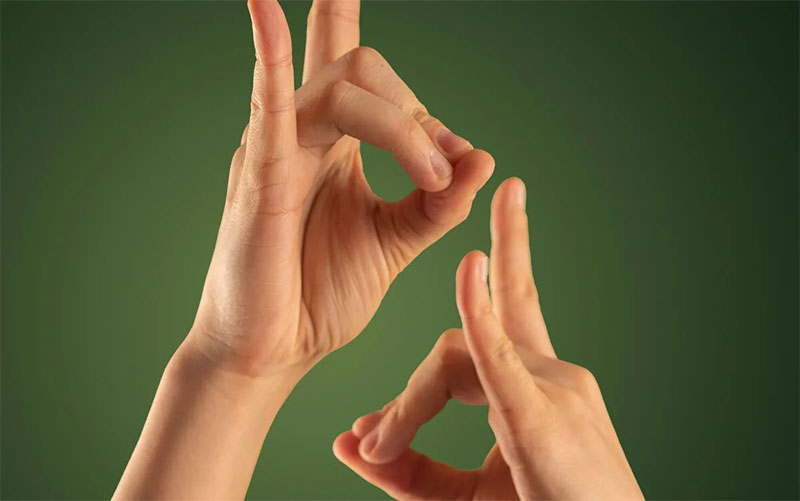
The Apana Mudra is all about detoxification. Apana means “downward moving force”, thus this mudra is linked to flushing out toxins through the excretive and digestive systems. It is thought to strengthen the heart, balance the doshas, and improve flow of sweat, urine, and stool.
How to Do It: Using both you right and left hand, fold your middle and ring finger down while keeping the index fingers pointing upwards. Then, fold the tip of your thumb to touch the tips of your middle and ring finger.
Associated Elements: Space & Earth
5. Mudra of Holding the Jewel: Manidhara Mudra
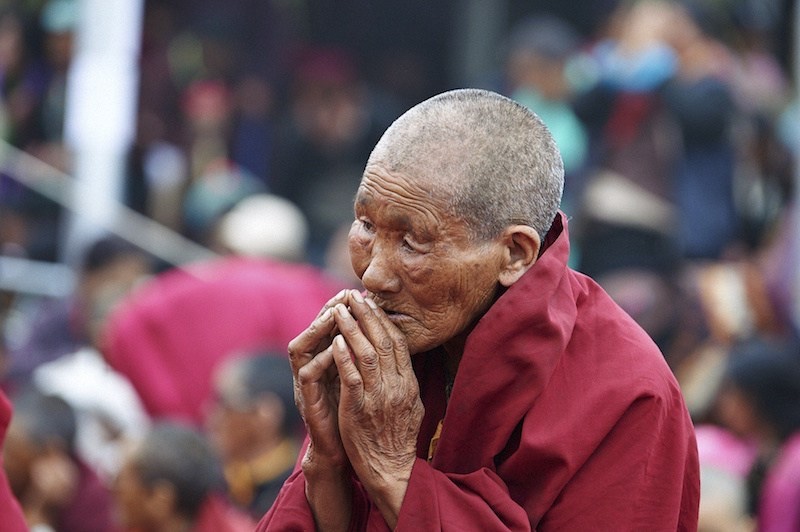 Padum, Zanskar
Padum, ZanskarThis prayer-like position actually leaves the palms open in the center as if holding a jewel. Often seen in depictions of the Buddha, the Manidhara Mudra is believed to represent a fulfillment of wishes or the abundance of the Buddha’s compassion.
How to Do It: Bring together the right and left hand at the center of the chest. Keep the hands remain arched so that there is space between the palms and fingers.
Associated Elements: All
6. The Teaching Mudra: Vitarka Mudra
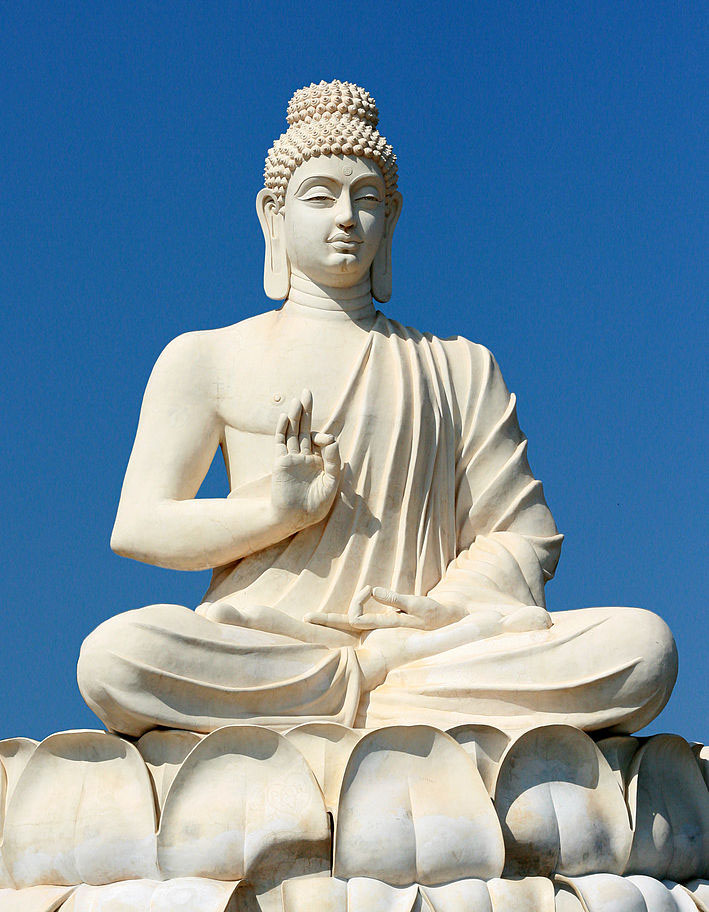
The Vitarka mudra helps transmit the core purpose of important teachings, specifically those of the Buddha or a spiritual guru. The circle between the index finger and thumb signifies the wheel of teaching. This mudra can help you be more receptive to learning and personal growth.
How to Do It: First, touch the tip of your right index finger to your thumb and create a circle. Next, raise the right hand to your heart chakra and face your hand outwards. Keep the left hand resting with the palm facing up and fingers pointed downwards.
Associated Elements: Fire & Air
7. Mudra of Generosity: Varada Mudra
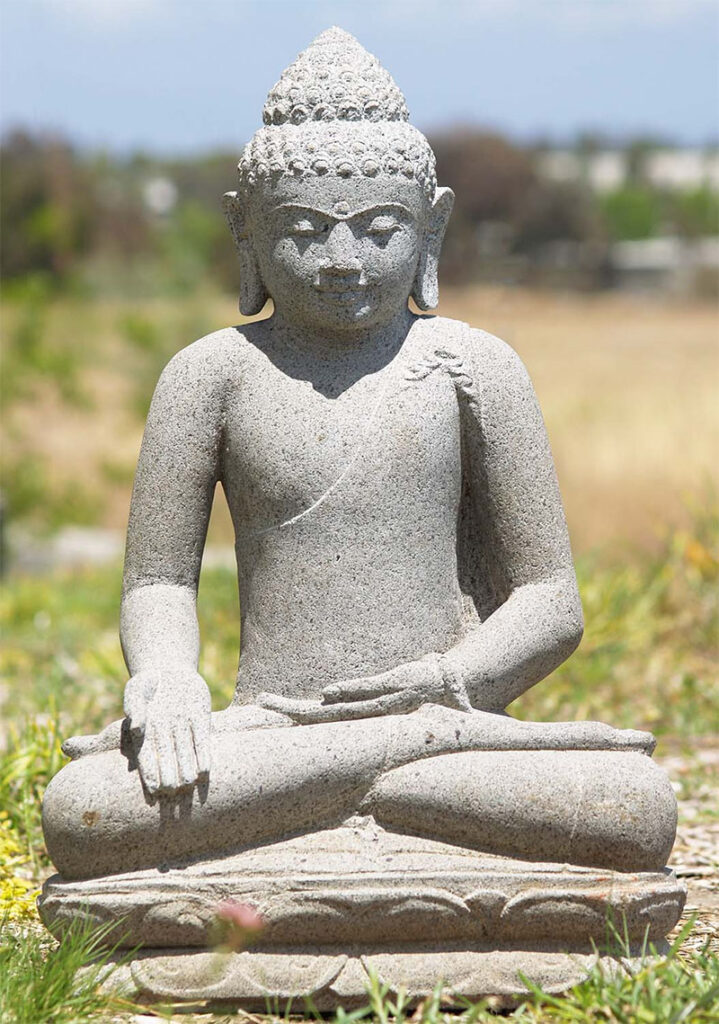
When you are seeking a granting of wishes or trying to be more generous with your time or money, the Varada mudra evokes charity and compassion. This gesture helps spread kindness and good vibes. It looks like an open resting hand at the sacral chakra.
How to Do It: Rest your left hand on your left knee with your palm facing upwards and fingers straight. You can use your right hand to create another mudra or just leave it facing up in your lap.
Associated Elements: All
8. Life Force Gesture: Prana Mudra
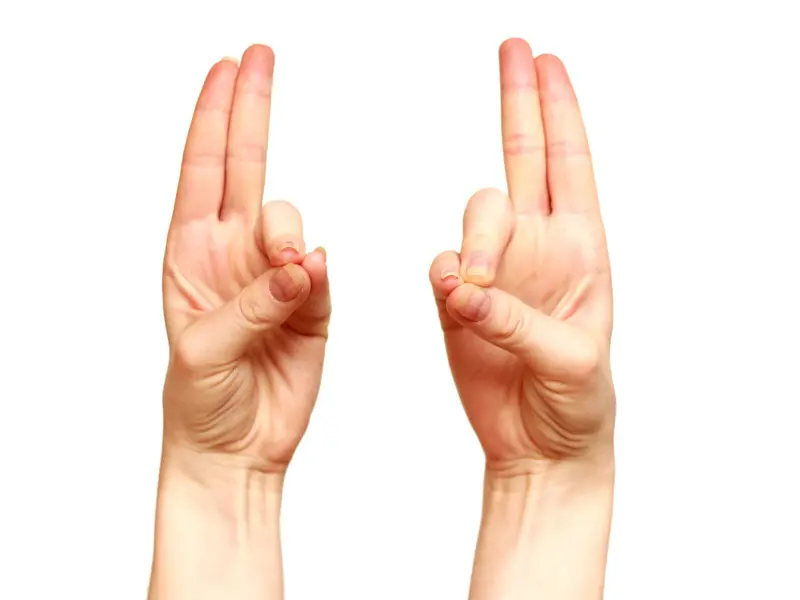
Prana is the vital life force that flows through all living things. The prana mudra aims to open up channels of energy and is especially useful for energizing you in the morning.
How to Do It: Touch the tips of your ring fingers and pinky fingers to your thumb tip. The index and middle fingers stay straight and touching.
Associated Elements: Fire, Earth & Water
9. Gesture of Perception/Intellect: Buddhi Mudra
In Sanskrit, buddhi means “intellect” or “perception”, signifying this “seal” of improved mental clarity. This mudra aims to balance the water element in your body and promote fluid thoughts and higher spiritual faculties during meditation.
How to Do It: Bring the pinky finger to touch the tip of your thumb. Leave your index, middle, and ring fingers extended. Use a light pressure to finish the “seal”.
Associated Elements: Water
11. Namaskara or Anjali Mudra

Commonly known as “namaste hands” or “namaskar”, the Anjali mudra is universally recognized as a symbol of yoga. It translates to “salutation” and is used as a common greeting and also promotes a mutual respect for others.
This mudra can help connect you more to the heart’s language to feel more compassion and love for your fellow humans. Namaskara is most often accompanied by the words “namaste” and a light head bow.
How to Do It: Bring your palms together at heart center with the edges of the pinky fingers and thumbs touching each other.
Associated Elements: All
12. Gesture of Enlightenment: Dhyana Mudra
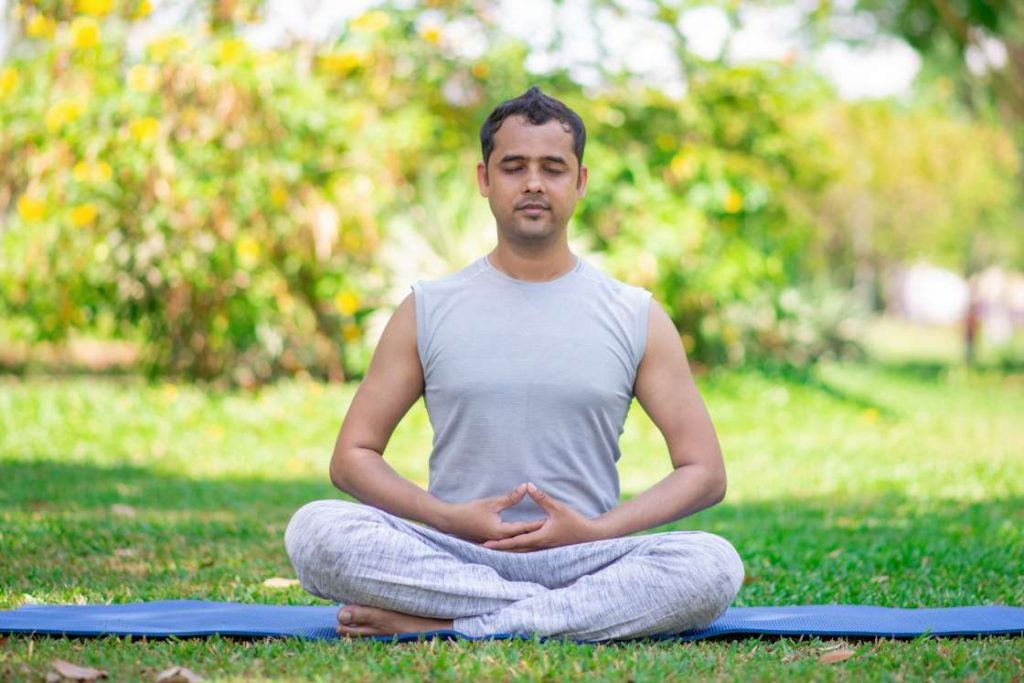
Of all the hand positions we’ve covered, this one is arguably the most powerful and recognizable. The hands coming together in your lap at the base of the sacral chakra symbolizes a cleansing and grounding to awaken your consciousness.
The left hand signifies dharma and the right signifies community. When these come together with the thumbs touching up above, it creates a triangle that points upward to pay respects to Buddha’s life of charity and love. The dhyana mudra is best for using in meditation to promote profound concentration and memory. Dhyana mudra is also known to increase knowledge and memory.
How to Do It: Bring the right hand cradled inside the left hand with palms facing upwards. Bring the left thumb to touch the right and form a triangle. Focus on removing all thoughts from the mind and breathing steadily.
Associated Elements: Air
Closing Thoughts
Mudras are ancient meditation hand positions that can help uplevel your yoga or spiritual practice. They evoke sensory powers that activate specific energy channels in your body.
Depending on the mudra you choose, you may be able to use it in combination with meditative practices to reinforce specific healing states. But remember, mudras are sacred yoga symbols that should be used respectfully.
Namaste!

 Lynk
Lynk 